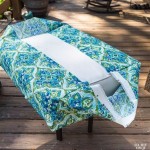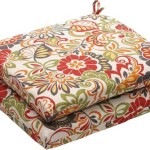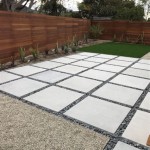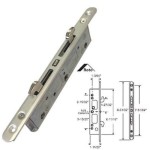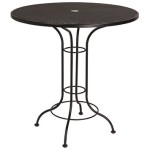Best Way to Clean Metal Patio Furniture
Metal patio furniture offers durability and style, making it a popular choice for outdoor spaces. However, exposure to the elements leads to the accumulation of dirt, grime, and rust. Regular cleaning and maintenance are essential to preserve the appearance and extend the lifespan of metal patio furniture. The specific cleaning method varies depending on the type of metal, the severity of the dirt and rust, and the presence of painted or powder-coated finishes. This article provides a comprehensive guide to the best ways to clean metal patio furniture, covering various techniques and precautions to ensure optimal results.
Identifying the Metal Type and Finish
Before commencing any cleaning process, it is crucial to identify the type of metal used in the furniture and its finish. Common metals used for patio furniture include aluminum, steel, wrought iron, and cast iron. Each metal possesses unique characteristics and requires different cleaning approaches. Aluminum is lightweight and resistant to rust, while steel and iron are stronger but more susceptible to corrosion. Wrought iron is often intricately designed, requiring careful attention to detail during cleaning. Cast iron is heavier and porous, making it prone to rust and requiring protective coatings.
The finish of the metal furniture also plays a significant role in selecting the appropriate cleaning method. Painted finishes, powder coatings, and protective sealants are commonly applied to metal furniture to enhance its appearance and protect it from the elements. Abrasive cleaners and harsh chemicals can damage these finishes, leading to discoloration, peeling, or scratching. Therefore, it's crucial to identify the finish type to avoid damaging it during the cleaning process.
Consulting the manufacturer's instructions or product specifications is highly recommended to determine the metal type and finish. If this information is unavailable, a close visual inspection can often provide clues. Aluminum is typically lightweight and silver in color, while steel and iron are heavier and may exhibit signs of rust. Wrought iron often features intricate designs, while cast iron is heavy and has a rough texture. Painted or powder-coated finishes will typically have a smooth, uniform appearance.
General Cleaning Procedures for Metal Patio Furniture
Regardless of the metal type or finish, certain general cleaning procedures apply to all metal patio furniture. These procedures involve removing loose dirt and debris, washing the furniture with a mild cleaning solution, and rinsing it thoroughly with clean water.
The first step involves removing loose dirt and debris. This can be accomplished using a soft-bristled brush, a vacuum cleaner with a brush attachment, or a leaf blower. Pay particular attention to crevices and hard-to-reach areas where dirt and debris tend to accumulate. Removing loose dirt and debris before washing prevents it from scratching the finish during the cleaning process.
The next step involves washing the furniture with a mild cleaning solution. A mixture of warm water and mild dish soap is generally effective for removing dirt and grime. Avoid using harsh chemicals, abrasive cleaners, or scouring pads, as these can damage the finish. Apply the cleaning solution to the furniture using a soft cloth or sponge, working in small sections. Gently scrub the surface to remove dirt and grime, paying particular attention to heavily soiled areas.
After washing the furniture, rinse it thoroughly with clean water. Use a garden hose or a bucket of clean water to remove all traces of the cleaning solution. Ensure that no soap residue remains on the furniture, as this can attract dirt and grime. Allow the furniture to air dry completely before applying any protective treatments or storing it.
Specific Cleaning Methods for Different Metal Types
While the general cleaning procedures outlined above apply to all metal patio furniture, certain metal types require specific cleaning methods to address their unique characteristics and vulnerabilities.
Aluminum: Aluminum is relatively easy to clean due to its resistance to rust. However, it can develop a white, chalky residue known as aluminum oxide. To remove aluminum oxide, use a mixture of equal parts white vinegar and water. Apply the solution to the affected areas using a soft cloth or sponge and let it sit for a few minutes. Scrub the surface gently with a soft-bristled brush and rinse thoroughly with clean water. For stubborn stains, use a commercial aluminum cleaner specifically designed for patio furniture.
Steel and Iron: Steel and iron are susceptible to rust, so it's important to address rust spots promptly. For light rust, use a mixture of baking soda and water to form a paste. Apply the paste to the rust spots and let it sit for several minutes. Scrub the area with a soft-bristled brush and rinse thoroughly with clean water. For heavier rust, use a commercial rust remover specifically designed for metal furniture. Follow the manufacturer's instructions carefully and wear protective gloves and eyewear. After removing rust, apply a rust-inhibiting primer and paint to protect the metal from future corrosion.
Wrought Iron: Wrought iron's intricate designs can make cleaning challenging. Use a soft-bristled brush or a vacuum cleaner with a brush attachment to remove dirt and debris from the crevices. Wash the furniture with a mild cleaning solution and rinse thoroughly with clean water. For rust spots, use a wire brush or sandpaper to remove the rust. Apply a rust-inhibiting primer and paint to protect the metal from future corrosion. Consider using a spray paint specifically designed for wrought iron furniture to ensure even coverage and a durable finish.
Cast Iron: Cast iron is porous and prone to rust, requiring regular maintenance to prevent corrosion. Clean the furniture with a mild cleaning solution and rinse thoroughly with clean water. For rust spots, use a wire brush or sandpaper to remove the rust. Apply a rust-inhibiting primer and paint to protect the metal from future corrosion. Consider applying a sealant or protective coating to the cast iron to prevent moisture from penetrating the metal and causing rust.
Dealing with Stubborn Stains and Mildew
In some cases, metal patio furniture may develop stubborn stains or mildew that require more aggressive cleaning methods. However, it's important to proceed with caution to avoid damaging the finish or the metal itself.
For greasy stains, use a degreasing cleaner specifically designed for metal surfaces. Apply the cleaner to the affected area and let it sit for several minutes. Scrub the surface gently with a soft-bristled brush and rinse thoroughly with clean water. Avoid using harsh chemicals or abrasive cleaners, as these can damage the finish.
Mildew growth can occur on metal patio furniture in damp or shaded areas. To remove mildew, use a solution of bleach and water. Mix one part bleach with ten parts water. Apply the solution to the affected areas using a soft cloth or sponge and let it sit for several minutes. Scrub the surface gently with a soft-bristled brush and rinse thoroughly with clean water. Wear protective gloves and eyewear when working with bleach and ensure adequate ventilation. Avoid using bleach on colored or painted surfaces, as it can cause discoloration.
Alternatively, a mixture of white vinegar and water can be used to remove mildew. Mix equal parts white vinegar and water. Apply the solution to the affected areas using a soft cloth or sponge and let it sit for several minutes. Scrub the surface gently with a soft-bristled brush and rinse thoroughly with clean water. Vinegar is a natural disinfectant and is less harsh than bleach, making it a safer option for delicate finishes.
Protective Measures and Maintenance
After cleaning metal patio furniture, it's important to take protective measures to prevent future dirt, grime, and rust accumulation. Applying protective coatings and following proper maintenance practices can significantly extend the lifespan of metal patio furniture.
Applying a protective wax or sealant to the metal surface can help prevent dirt and grime from adhering to the finish. This makes cleaning easier and reduces the risk of stains and discoloration. Choose a wax or sealant specifically designed for metal furniture and follow the manufacturer's instructions carefully. Apply the product evenly to the entire surface of the furniture using a soft cloth or applicator pad.
Covering metal patio furniture when it's not in use can protect it from the elements and prevent dirt, grime, and rust from accumulating. Use waterproof covers specifically designed for patio furniture. Ensure that the covers are securely fastened to prevent them from blowing away in windy conditions. Regularly inspect the covers for tears or damage and repair or replace them as needed.
Storing metal patio furniture indoors during the off-season is the best way to protect it from the elements. Clean the furniture thoroughly before storing it and apply a protective wax or sealant. Store the furniture in a dry, well-ventilated area to prevent moisture accumulation and rust. If indoor storage is not possible, cover the furniture with waterproof covers and elevate it off the ground to prevent moisture damage.
Regularly inspect metal patio furniture for signs of rust or damage. Address rust spots promptly to prevent them from spreading. Repair any damaged finishes or coatings to protect the metal from corrosion. Tighten any loose screws or bolts to ensure the stability and safety of the furniture.
By following these best practices for cleaning and maintaining metal patio furniture, it is possible to preserve its appearance, extend its lifespan, and enjoy its beauty for years to come. Regular cleaning and maintenance are essential investments that will protect the furniture from the damaging effects of the elements and ensure its continued functionality and aesthetic appeal.

How Do You Clean Metal Patio Furniture Productions

How To Clean Metal Garden Furniture Sefton Meadows Blog

The Best Way To Clean Outdoor Furniture Hgtv

How To Clean And Maintain Your Wood Metal Outdoor Furniture

4 Ways To Clean Metal Patio Furniture Get Rid Of Rust How Outdoor

7 Ways To Remove Rust From Metal Furniture

Diy Guide To Cleaning Your Patio Furniture

How To Clean Oxidized Metal Furniture Doctor

How To Clean Patio Furniture And Scentsible

How To Remove Rust From Metal Patio Furniture

